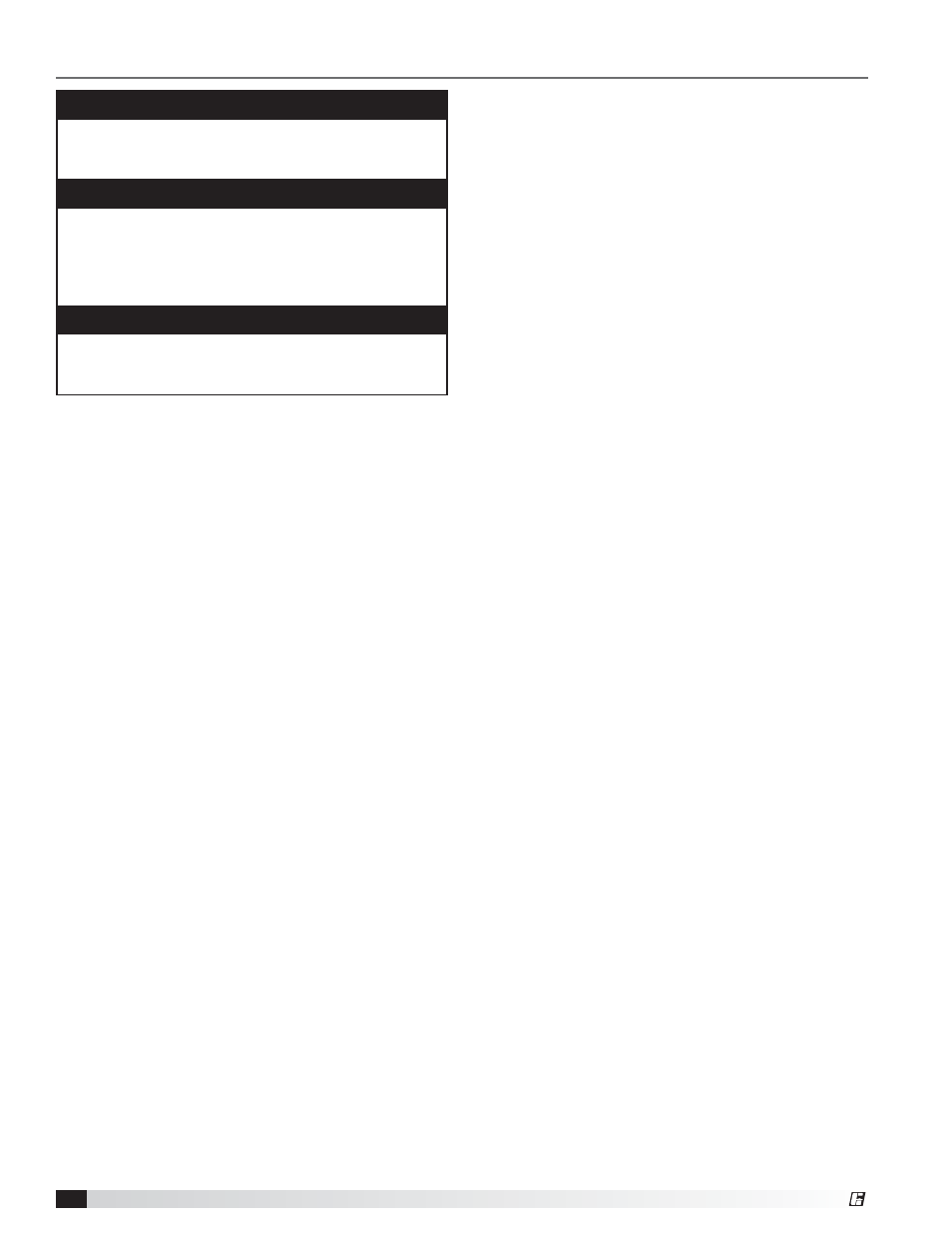Wall or single island canopy hoods - continued – Greenheck Canopy Hoods (452413 IOM) User Manual
Page 6

Kitchen Hoods • Type I and Type II
6
®
NOTE
All hanger brackets MUST be used and the hood must
be properly supported while lifting to prevent damage
or distortion to the hood.
NOTE
The hood MUST be hung evenly. If hung unevenly,
this may cause grease drainage problems. Provide
additional support if necessary so that the hood
doesn’t move in a manner that is acceptable with the
Authorities Having Jurisdiction (AHJ).
WARNING
When mounting the hood or any components against
the hood, never puncture or drill into the canopy. This
will void the hood listing and warranty.
8. If the hood was provided in sections with the
continuous capture option, once each hood
section is hung, install this option now. See page 9,
Continuous Capture Plenum Hoods.
9. If the hood was provided with any front or side
external supply plenums (other than the back
supply plenum), install these now. See page 10,
Installing Front/Side External Supply Plenums.
10. Install the remainder of both the exhaust and
supply ductwork. For further guidelines see page 9,
Ductwork.
11. If the hood is provided with any backsplash/
sidesplash panels, install them now. See page 11,
Installing Backsplash Panels.
12. If the hood is provided with any end skirts, install
them now. See page 12, Installing End Skirts.
13. If the hood is a Type I hood, it will require a fire
suppression system. Once the Type I hood(s)
and ductwork are fully installed, appliances are
in place and walls are complete, the fire system
should be completed. If the hood is provided with
a full factory-coordinated fire suppression system
installation, the certified fire system installer should
be contacted at this time to complete the final
hookups, testing and system certification based
upon manufacturer’s specification and local fire
codes. If the hood is not provided with either pre-
piping only or no fire suppression system, it is the
responsibility of a certified fire system installer
to install, test and certify the system based upon
manufacturer’s specification and local fire codes.
14. If the hood is provided with a control package,
these will need to be installed and wired by the
jobsite electrician. This typically includes wiring the
hood temperature sensors, hood lights and wiring
the fire suppression micro-switches. For general
hood electrical connections, see page 12, Electrical
Connections. If applicable, see the Installation
and Operations guide provided with the control
package.
Wall or Single Island Canopy Hoods - continued
15. If the hood is provided with enclosure panels,
install them now. See page 13, Installing Enclosure
Panels.
16. Install the rest of the hood accessories provided.
This may include grease filters or condensate hood
baffles, grease cups, light bulbs (provided by others
unless LED tube style), light globes, and trim strips.
It is recommended that the protective plastic sheeting
remain on the hood until fully installed to better protect
the product from scratching and marking. Once
removed, use stainless steel polish, such as BlueAway
or equivalent, to clean the hood and/or remove marks
or discoloration. Be sure to wipe with the grain and not
against it.